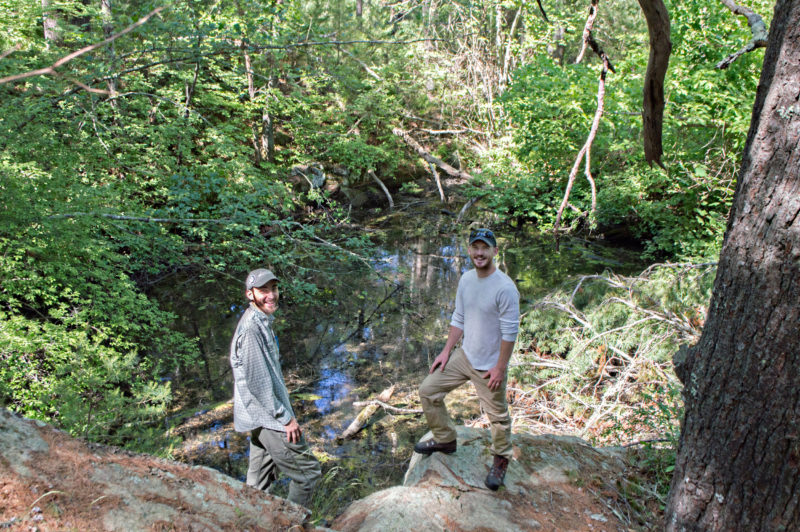Conservation of Old Hammond Quarry property expands Nasketucket Bay State Reservation
From the early 1700s until the early 1900s, the pink granite that Mattapoisett became known for was quarried from a small bedrock outcrop near the mouth of the Mattapoisett River, just south of today’s Route 6. Now, this historically and ecologically important property has been permanently protected from development.

TerraCorps-AmeriCorps service member Logan Johnson and Buzzards Bay Coalition Land Stewardship Manager Jack Sidar beside a vernal pool on the Hammond Quarry property.
This week, following a two-year effort led by the Coalition, the Massachusetts Department of Conservation and Recreation (DCR) closed a purchase of the 53-acre property surrounding Hammond Quarry. The acquisition permanently protects this land, which will serve as a “front door” to the nearly 500 acres of protected lands in the Commonwealth’s Nasketucket Bay State Reservation. The Mattapoisett Land Trust, Mattapoisett Community Preservation Committee, and The Nature Conservancy were also important partners in this project.
The protected property contains upland forest and forested wetlands designated Rare Species Priority Habitat for the Eastern box turtle. It’s also the home of the historic Hammond Quarry, which provided granite for the town’s wharves, for ships’ ballast stones, and for mill stones.
Despite its local value, this forest was under significant pressure from residential development, and was threatened with subdivision into dozens of home sites.
The land’s purchase by DCR will help preserve its rich natural diversity, as well as create a new site for historical education and walking trails. An existing trail through the property will be maintained by the Coalition and the town for public use, expanding access to the coast. The property is also easily accessible from the nearby regional bike path, which connects Mattapoisett to Fairhaven and New Bedford Harbor.
This property is part of a larger, coordinated effort by the Coalition and its partners that continues to protect large undeveloped areas around Nasketucket Bay. Nasketucket is already one of the cleanest waterways in Buzzards Bay, and its healthy shellfish and vibrant wildlife are partly due to the forests, fields, and wetlands that have been preserved to ensure clean water.